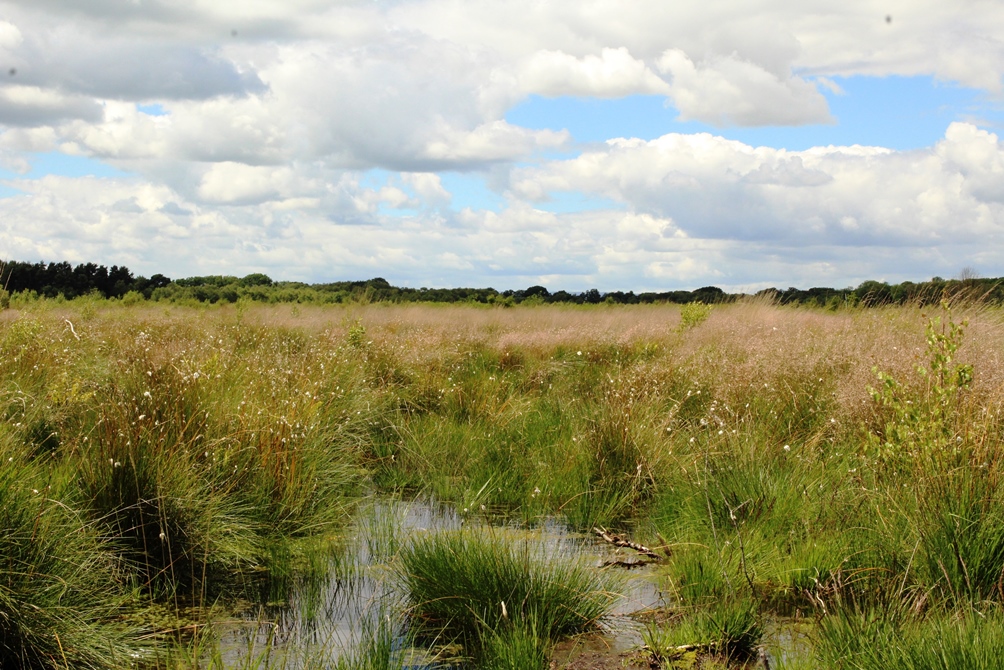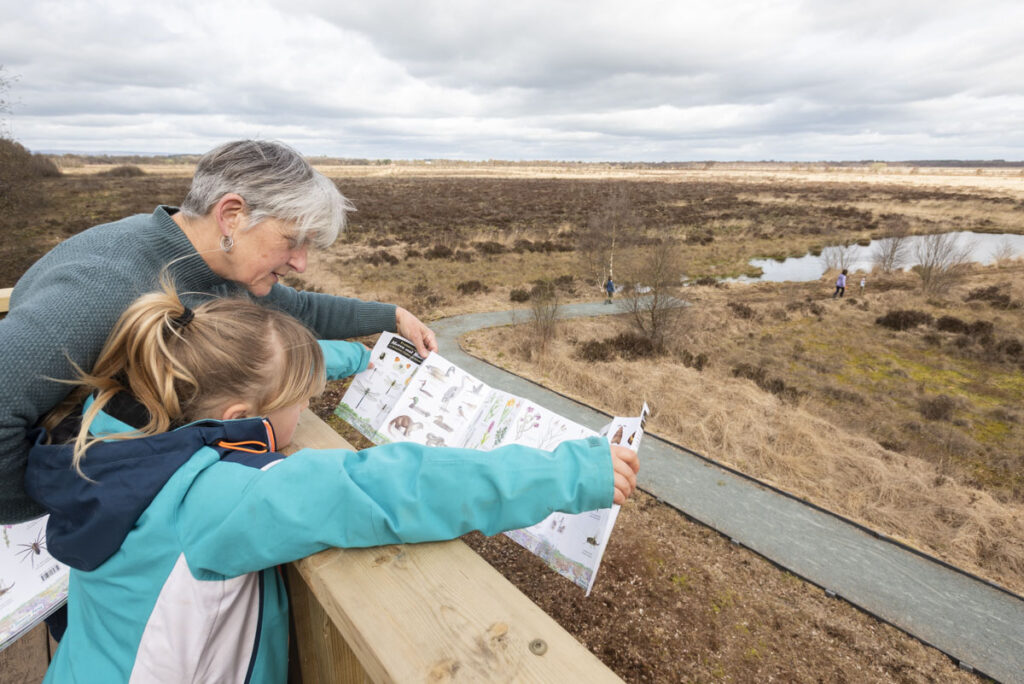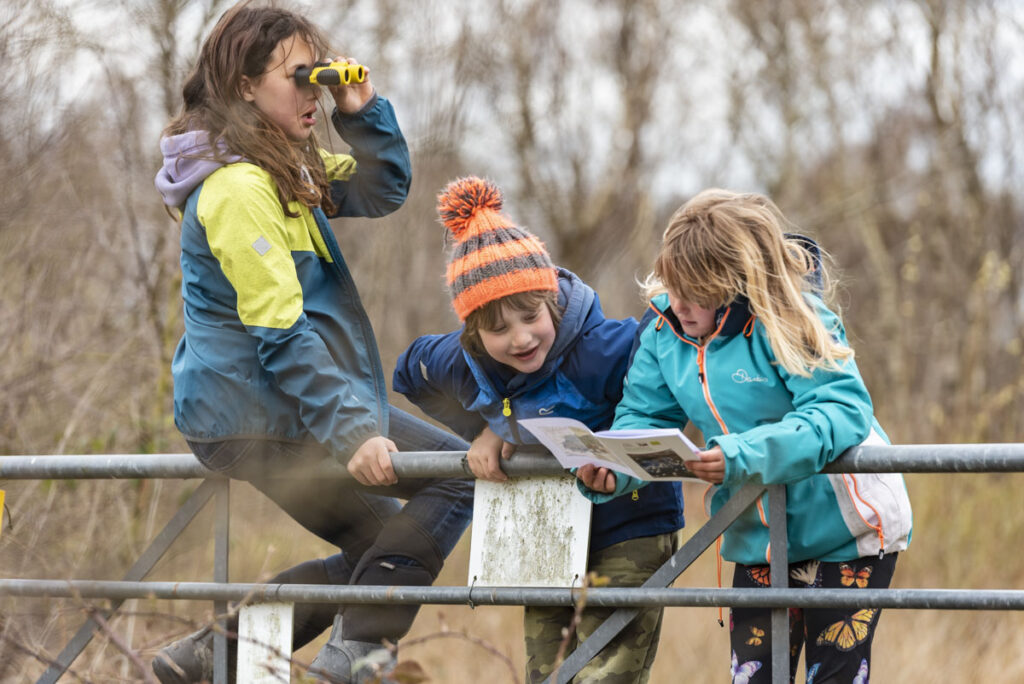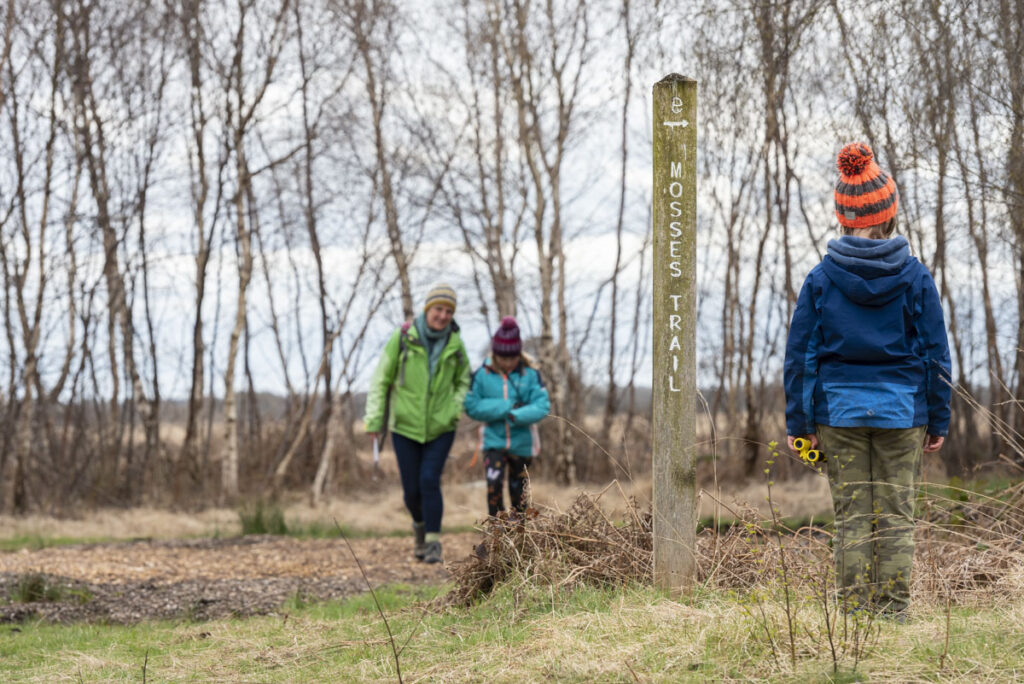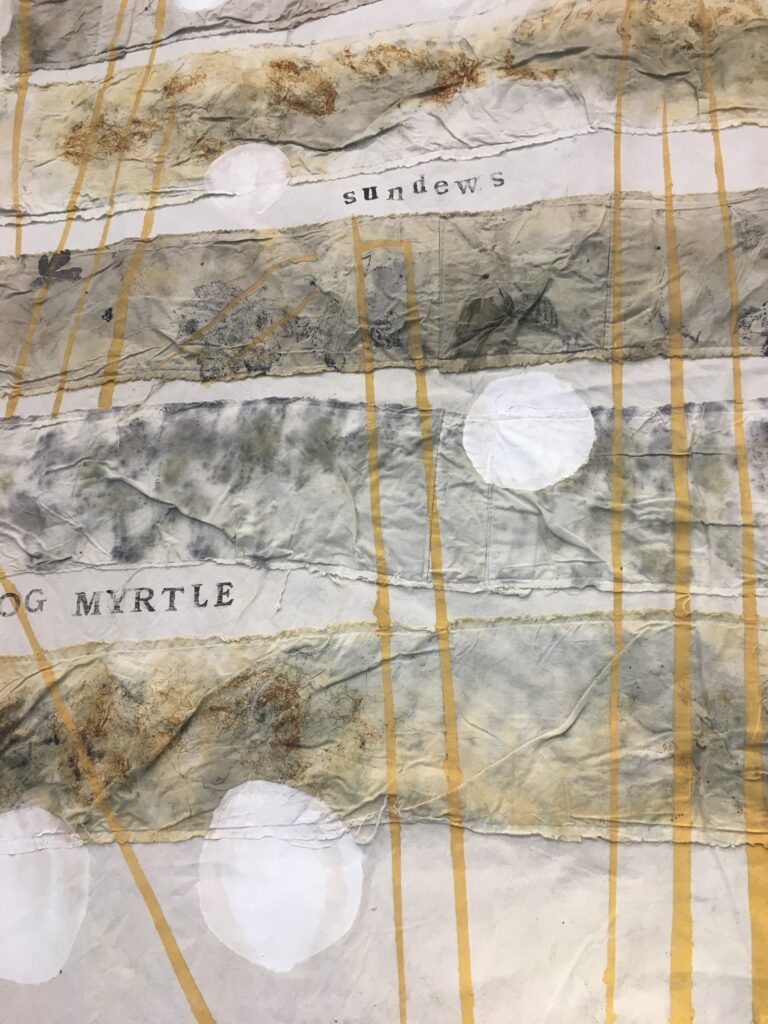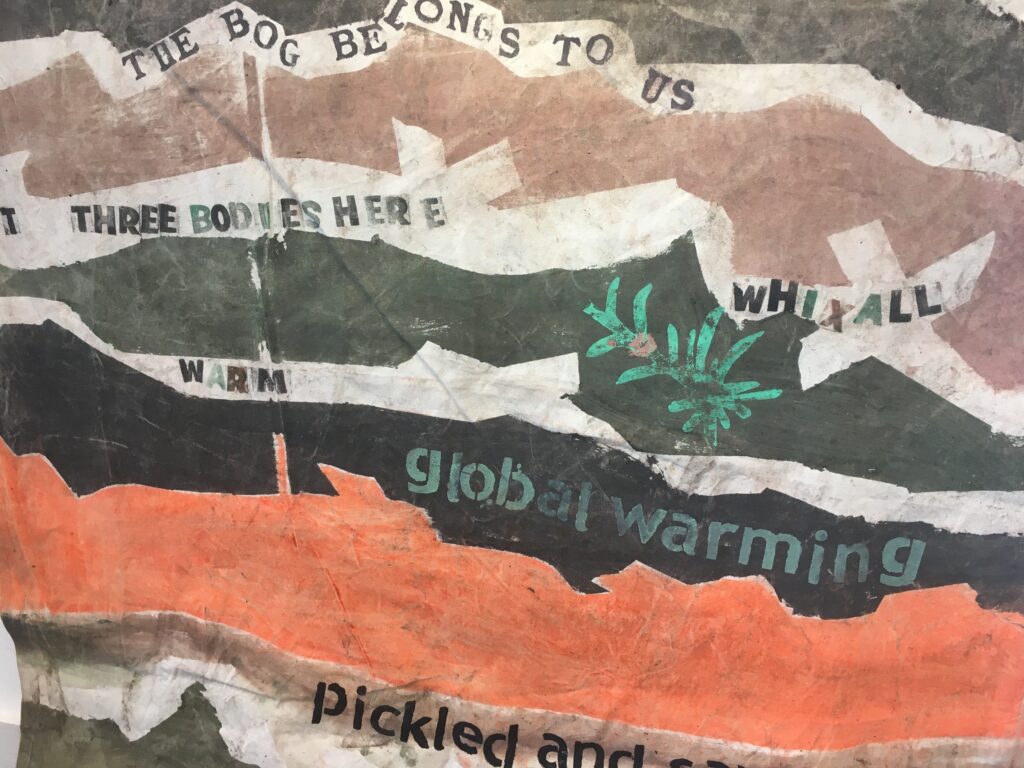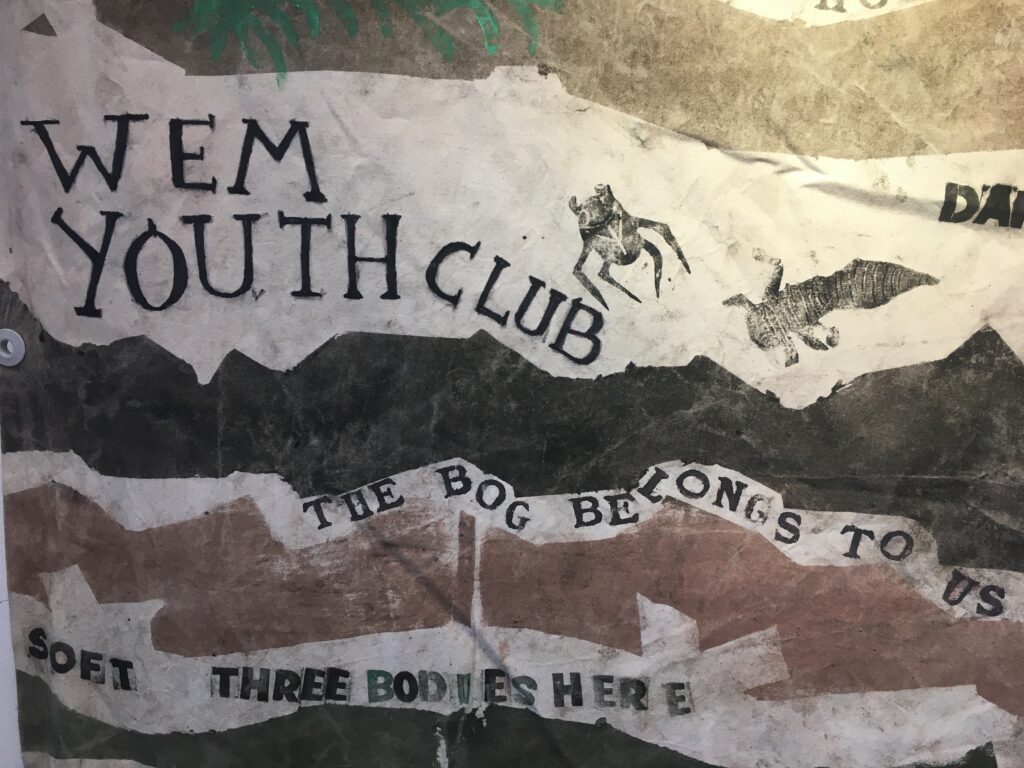The Marches Mosses Community Helps to Celebrate Peatlands 30th Birthday
September 30, 2021
The Marches Mosses celebrated its 30th anniversary as a National Nature Reserve (NNR) on 10-11 September and over 150 people came out to help with the party. The Wem Youth Club created three banners celebrating the landscape of the Mosses and flew them from the Mammoth Viewing Tower during the two-day party.
Thirty years might be a long time for an NNR, but for this precious peatland? That’s less than 1% of the 10,000 years that the Mosses have been around!
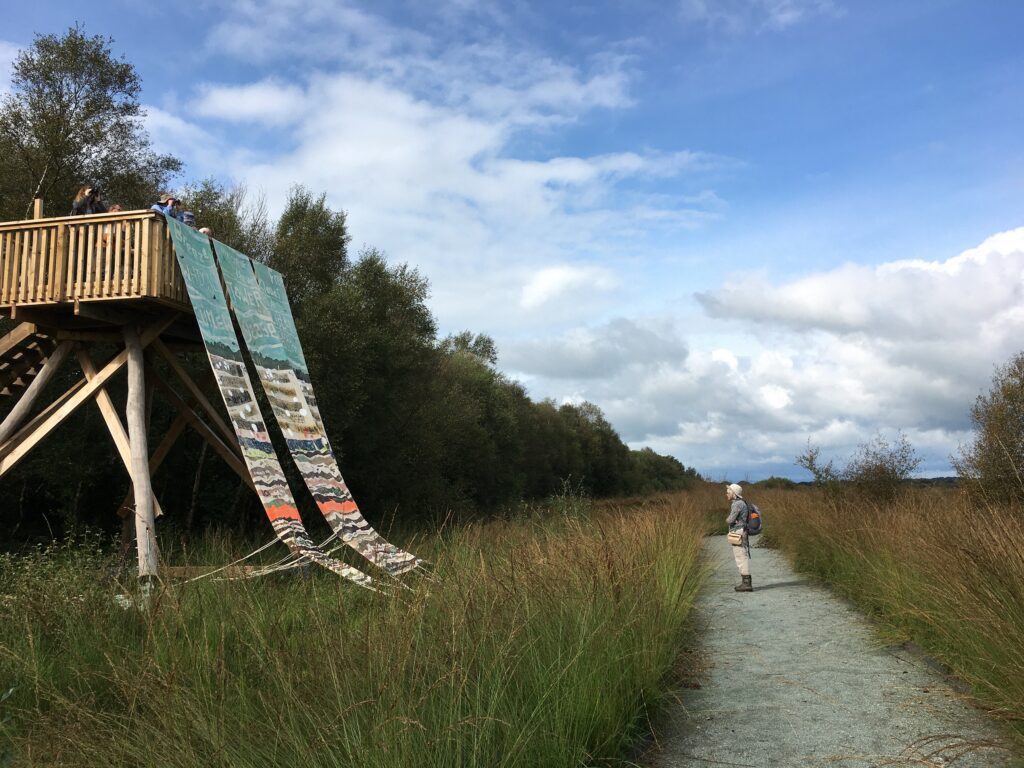
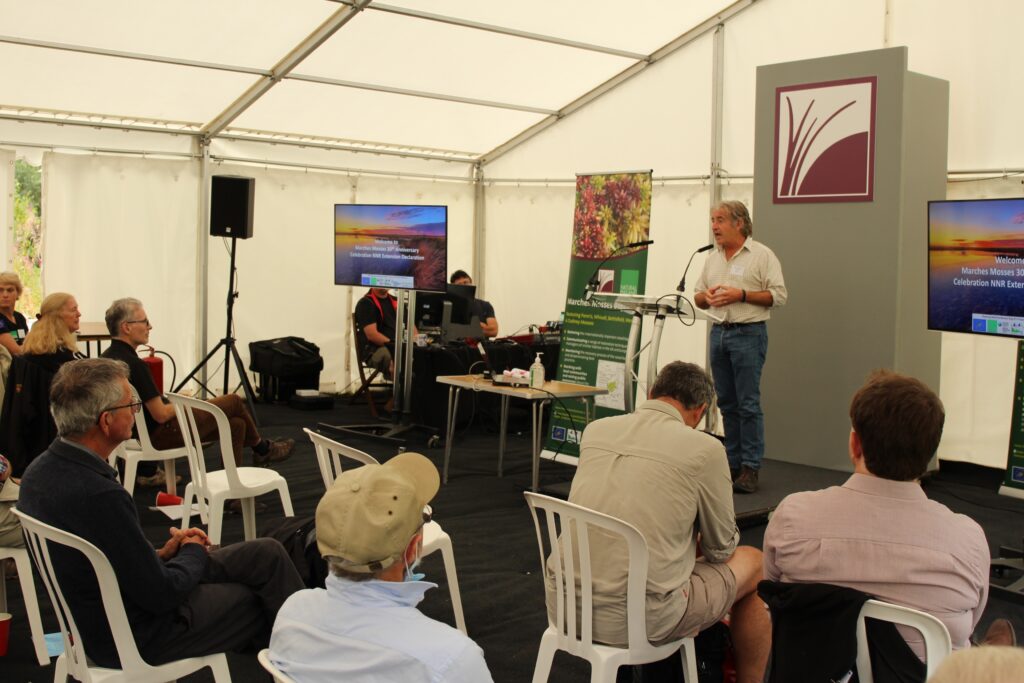
On Friday 10 September, some 30 delegates from the BogLIFE Project partners, Natural England, Natural Resources Wales, and Shropshire Wildlife Trust, plus guests attended a conference and a tour of the Marches Mosses. Delegates heard from Natural England Chair Tony Juniper, Natural Resources Wales Chair Sir David Henshaw and CEO of Shropshire Wildlife Trust Richard Grindle as they explained the importance of the Mosses in fighting nature and climate emergencies.
During the conference, the Fenn’s and Whixall Mosses NNR was officially extended to include an additional 237 acres of land around the edges of the Mosses. The edge habitat, or ‘lagg’ is an important part of the peatland as it helps to keep the peat wet and protected.
The real fun started on Saturday 11 September when 120 local visitors were having muddy fun! Led by two volunteers, visitors explored the wildlife that depend on the wet, acidic nature of the the peat to survive.
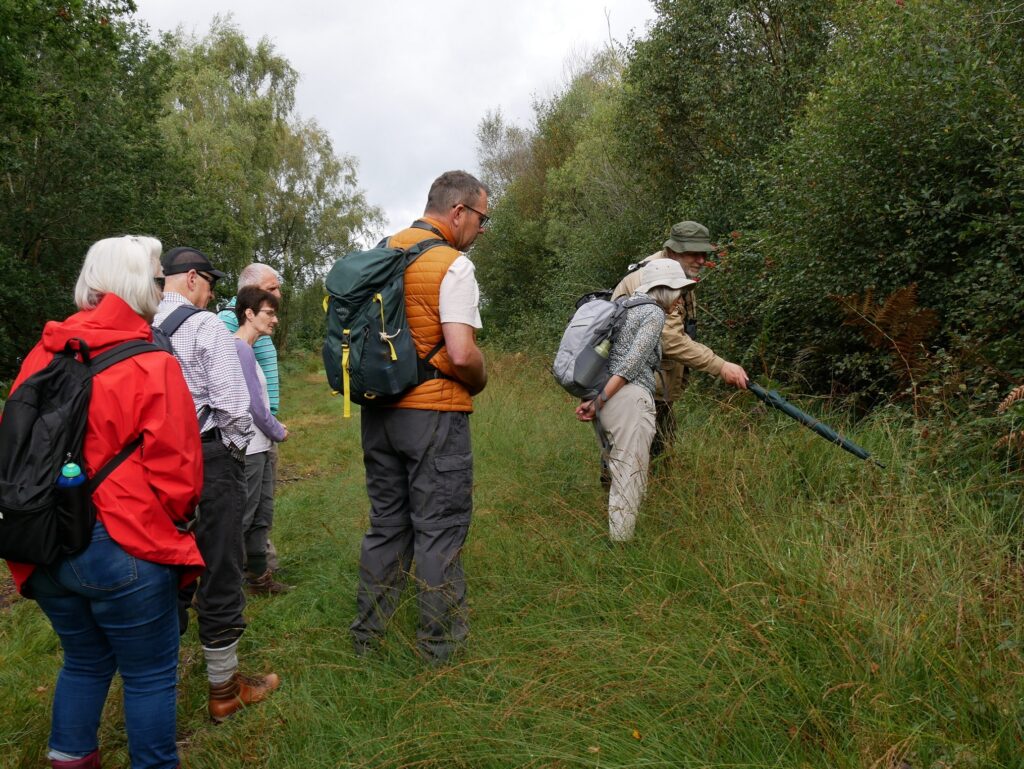
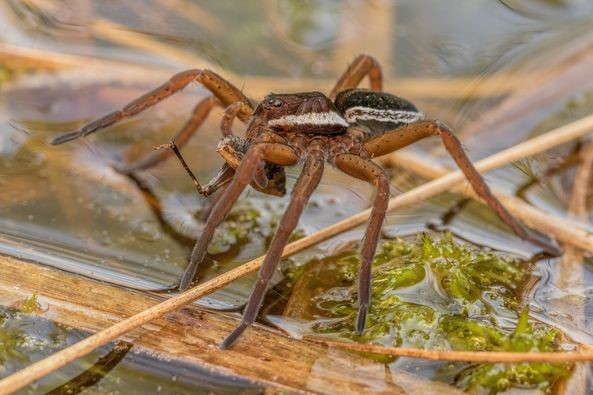
Natural England volunteer warden Stephen Barlow led a walk exploring what lives on the precious peat of the bog, including raft spiders and bog plants. He also explained how peat captures and stores vast quantities of carbon – vital in the fight against climate change. In fact, the Mosses store three million tonnes of carbon – equal to the annual carbon footprint of about a quarter of a million people.
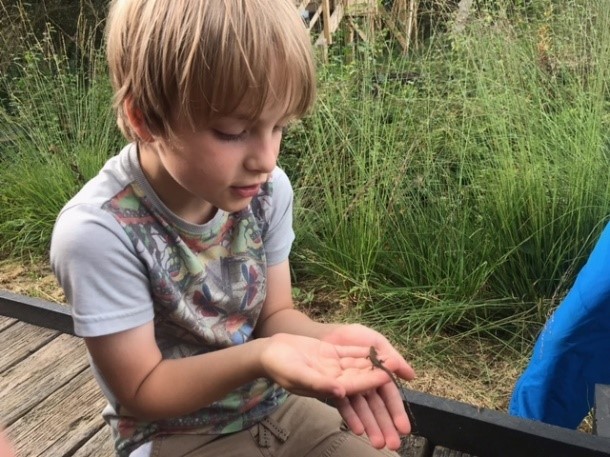
Ecologist Phil Playford took families on a bug safari on the Mosses, where they spotted varieties of beetles, spiders, frogs, toads, and lots of lizards. These creatures are thriving in the restored, wet peatland and include the nationally rare raft spider that seems to walk on the water’s surface as it looks for its dinner.
You can explore the Mosses, too, on the marked trails or along the length of a railway line that once crossed the this precious national treasure. This time of year, the ground is often muddy so be sure to wear boots or wellies – and the usual British necessity of a waterproof jacket and hat. You’ll experience the wide, open skies and tranquillity of the Mosses – good for our health and our souls – even under cloudy skies.
The Youth Group’s banners are on display at Wem Town Hall as part of the “peat-surface-sky” exhibition, now through 1 November 2021. The three banners, each seven metres long, were created by members of the Wem Youth Group based on their visits to the Mosses. The group worked with local artists to visualise the layers of the Mosses landscape: the open skies above the Mosses; the wildlife the lives on the peat and its ponds; and the peat itself, 10,000 years old and still as much as five metres deep. Wem Town Hall is short journey from the Mosses, making it easy to combine a visit to the exhibition with your walk on Mosses.

